Is Voice Search Registration a Real Thing?
Voice search registration is not a real process your business needs to go through. There is no official form you fill out or fee you pay to get your business mentioned by voice assistants like Alexa, Siri, or Google Assistant.
But the term still gets thrown around a lot.
Some companies even offer "voice search registration services" or “google voice search registration” often with vague promises or unnecessary fees. In most cases, these are misleading at best, and scams at worst.
In fact, according to the Keyword Overview tool within Semrush’s SEO Toolkit, the keyword “voice search registration” gets hundreds of searches per month. That means a lot of business owners still believe it’s something they’re supposed to do.
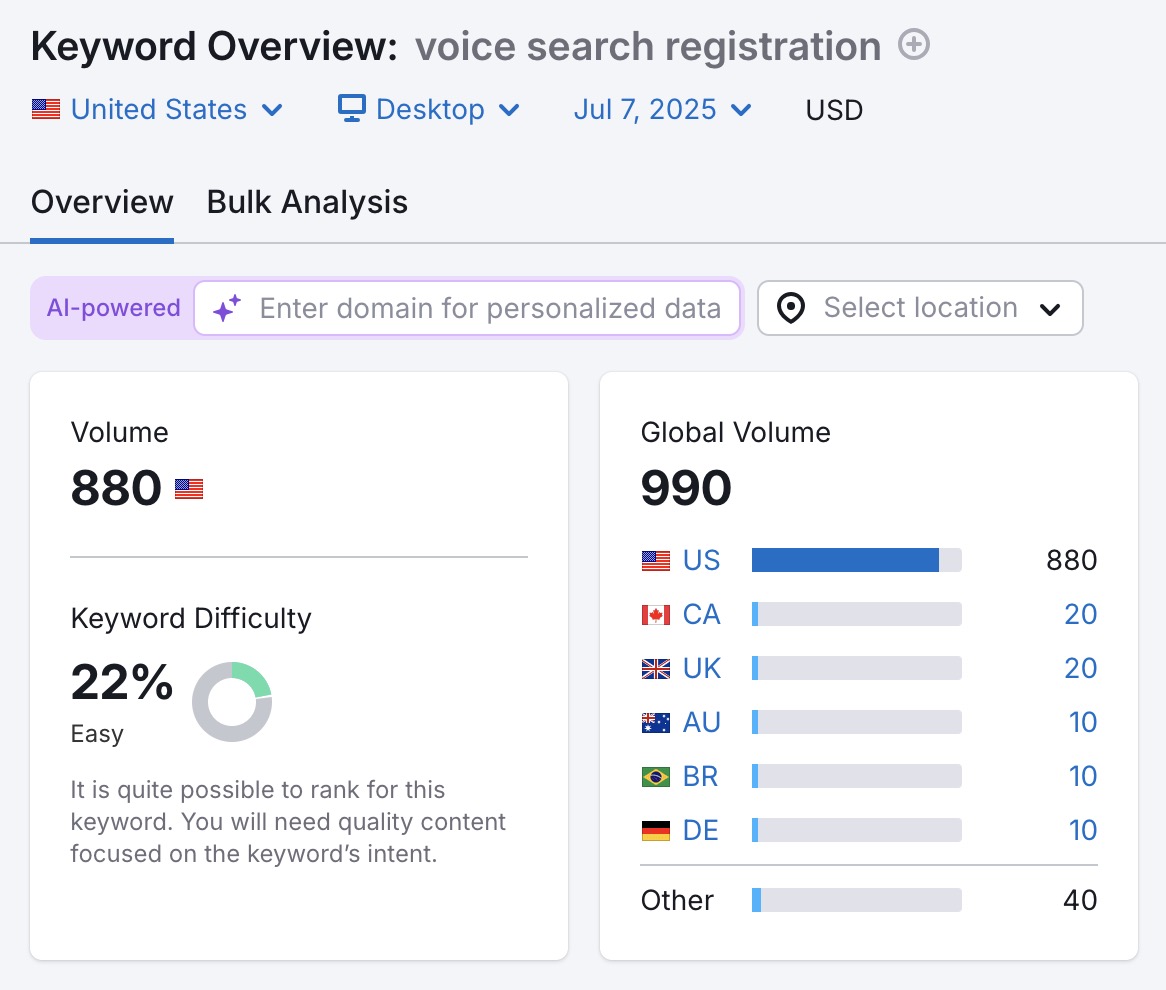
But here’s the truth:
There’s no special database you can submit your business to for Alexa, Siri, or Google Assistant.
As Aaron Whittaker, VP of Demand Generation & Marketing at Thrive Internet Marketing Agency, puts it:
Voice search registration gets sold like SEO did in the early 2000s——wrapped in technical mystique but offering no real control. But here’s the truth: You don’t register for Siri, Alexa, or Google Assistant. These platforms don’t work that way. They pull your info from places they already trust—like Google Business Profile, Apple Maps, Yelp, and the structured data on your site.
So if you’ve been wondering if voice search registration is legit, it’s not.
To get mentioned by voice search assistants, your business simply needs to have a solid online presence.
While voice search registration isn’t a real thing, voice search optimization is. And it’s based on local SEO best practices.
Before we go through them, let’s explain why you should care about voice search in the first place.
Why Is Voice Search Important for Your Business?
Being mentioned by voice search assistants can increase your business’s visibility. Just like appearing in the top results on a search engine results page (SERP) would.
For local businesses, this matters even more because location-specific voice queries are usually high-intent and can lead to calls, walk-ins, or bookings.
Why?
Because customers searching for these queries are often ready to make a purchase. They’re looking for a cafe that’s open near them or a hair salon to go to this week.
How Local SEO Can Help You Rank in Voice Search
Voice assistants like Google Assistant, Siri, and Alexa pull information from trusted sources like Google Business Profile, Yelp, Bing Places, and Apple Maps.
For example, I asked my Google Assistant: “What’s the best dentist in New York?”
It pulled the result straight from the Google Local Pack—the top three local business listings that appear for location-based queries.
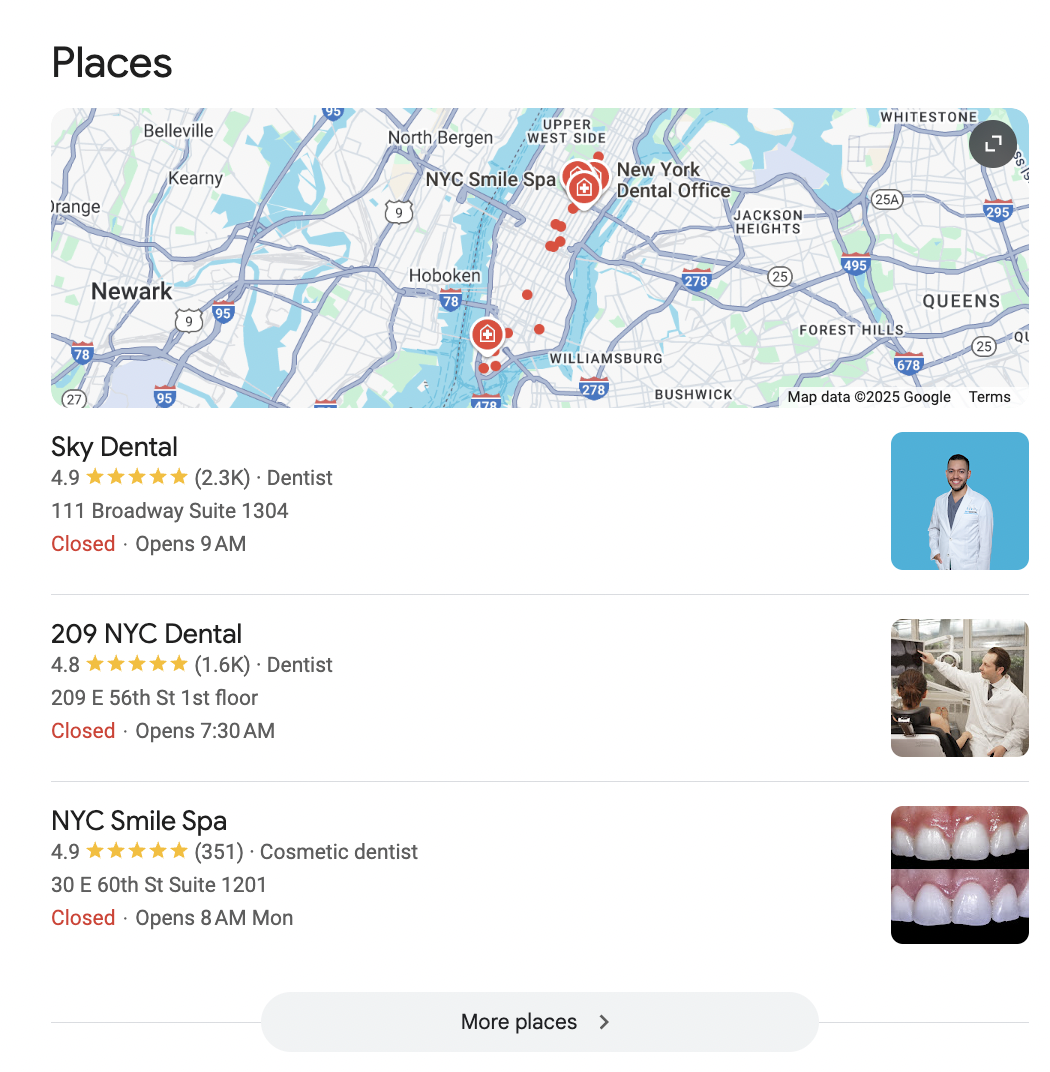
Good local SEO can help you rank in these results and therefore also boost your chances of appearing in voice search results.
Voice Search Registration Checklist
1. Create & Verify Your Google Business Profile (GBP)
Voice assistants like Google Assistant often pull voice search results directly from the Google Business Profile directory. So if you want your business to be mentioned in voice responses, this is the first thing you need to set up.
Your Google Business Profile is a free business listing that lets you manage how your company appears on Google Search and Maps.
Here’s what a GBP listing looks like on Google Search:
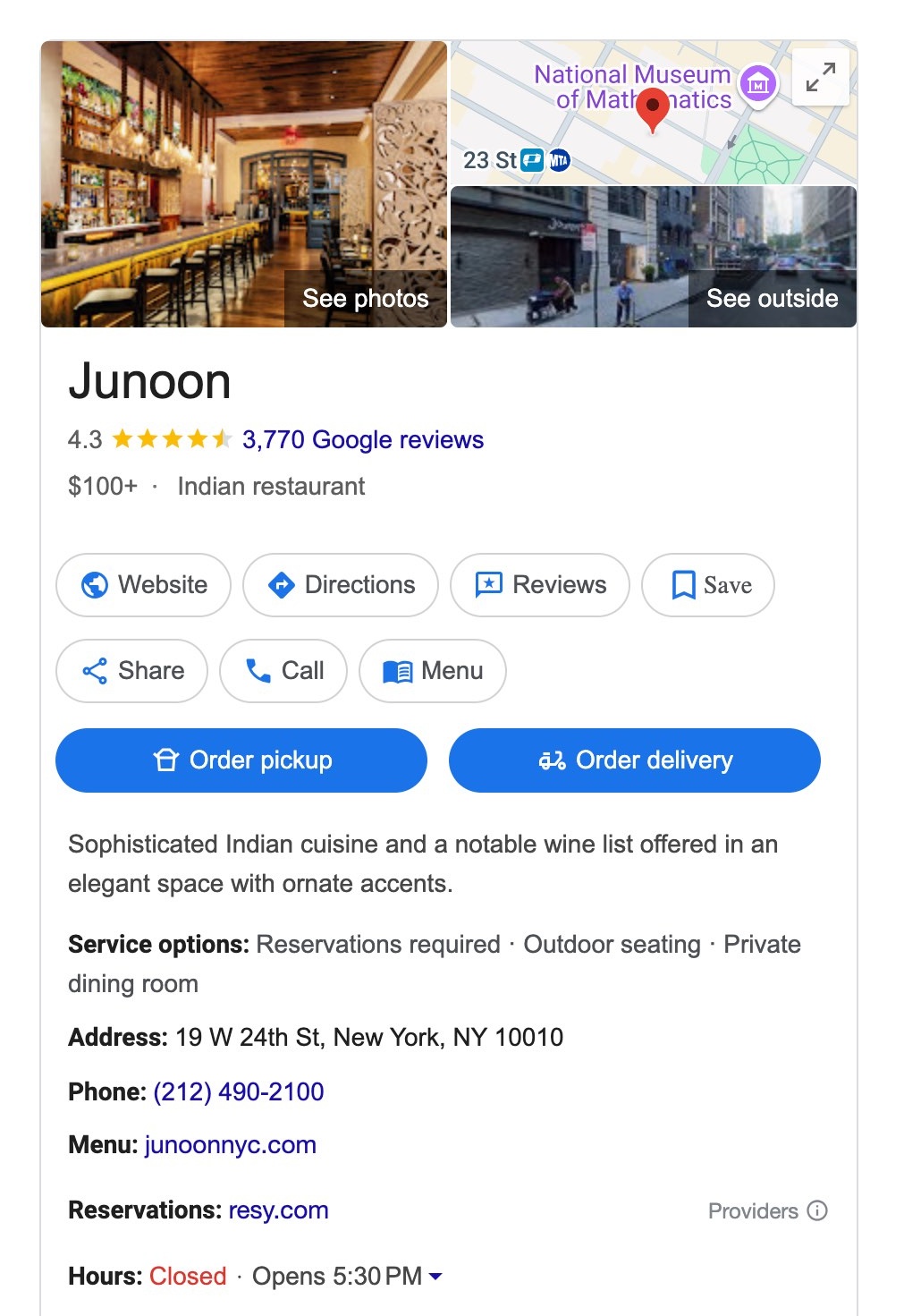
To create your business’s GBP listing, go to google.com/business and sign in using your Google account.
Type in your business name. If it already exists and hasn’t been claimed, you’ll be able to claim it right away. Google will walk you through the verification steps.
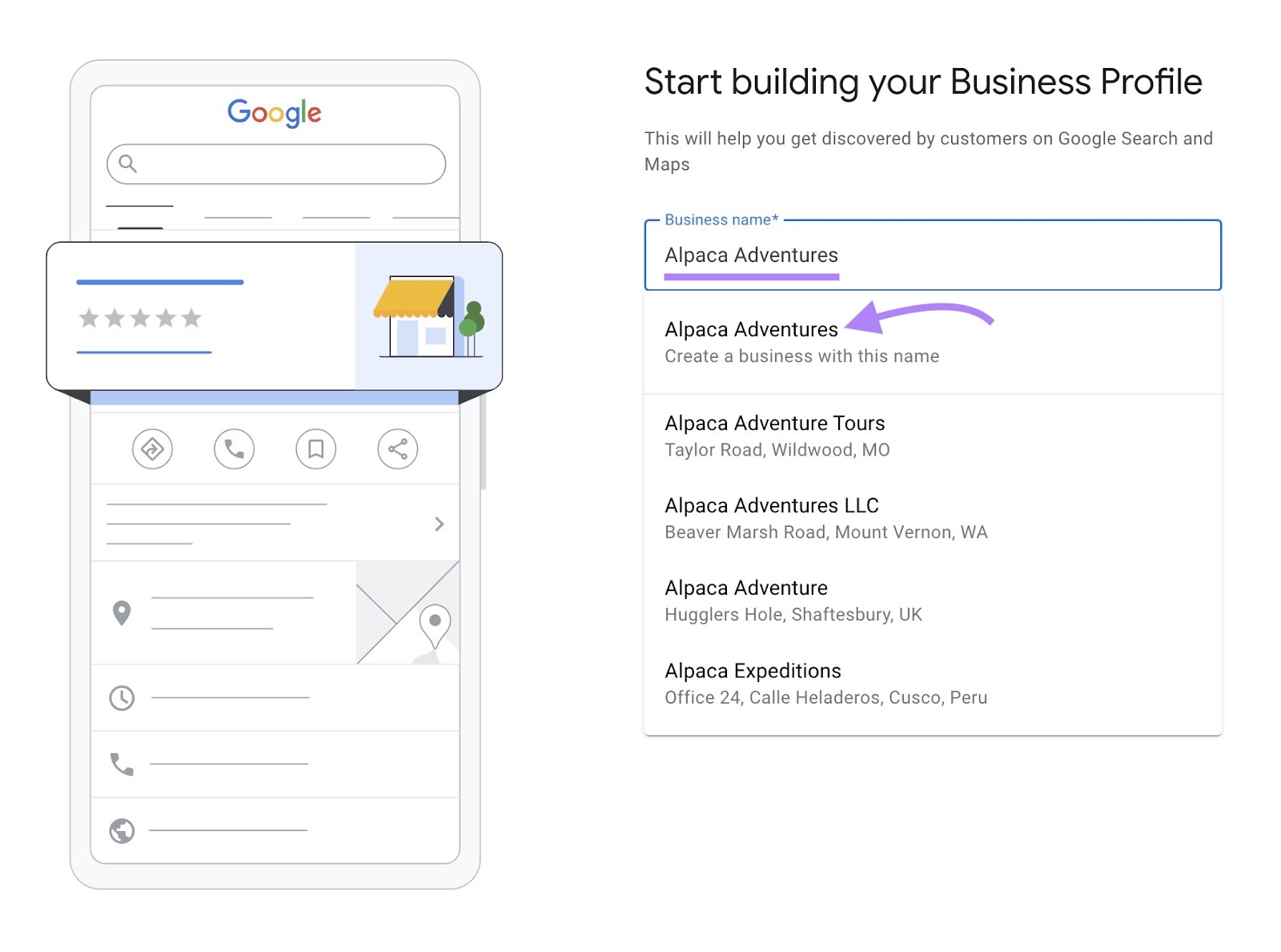
If your business doesn’t appear, you’ll need to create a new profile from the ground up.
Simply fill in details like your address and contact info, and select a relevant category.
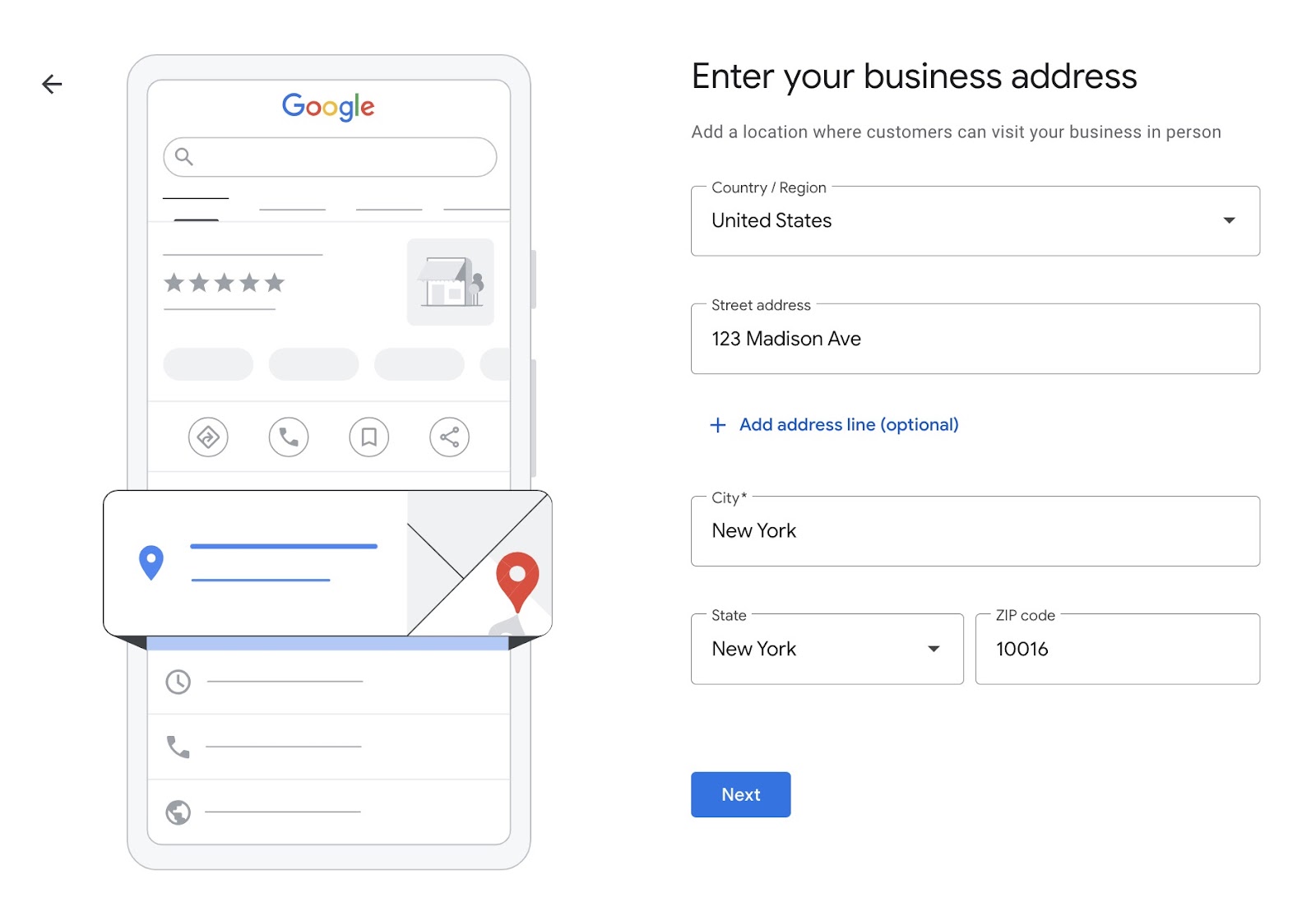
After submitting those details, Google will ask you to verify the listing.

Depending on your business and location, you might be able to verify by phone, email, postcard, video upload, or even a live video call.
2. Optimize for the Google Local Pack
When someone performs a voice search like “best dentist near me” or “coffee shop open now,” voice assistants often pull results directly from the Google Local Pack.
If your business is featured there, it’s far more likely to be mentioned in voice responses, too.
One of the most effective ways to appear in the Local Pack is to optimize your GBP.
A complete and active GBP listing can increase your chances of appearing in the Google 3-Pack when people search for businesses like yours nearby.
Here’s how to optimize your GBP listing:
- Fill out every field. Make sure your business name, address, phone number, website, hours, and services are all accurate.
- Add high-quality visuals. Upload high-quality images and videos of your storefront, interior, products, and team.
- Collect and reply to reviews. Ask satisfied customers to leave reviews. Respond to them (including the negative ones) to show you care and are still actively in business.
- Post regular updates. Share local news, service changes, events, or seasonal announcements.
- Add your services or products. List what you offer, along with descriptions and pricing, so customers know what to expect.
- Include helpful extras. Add links to your website, menu, booking options, and directions. These small touches make it easier for people to take action right from your profile.
Use Semrush’s GBP Optimization Tool to streamline your optimization efforts.
Start by setting up your business inside the tool and connecting it to your GBP listing. Once connected, Semrush will automatically scan your GBP for potential issues.
From there, you can start optimizing your listing. You can add/modify your name, address, and phone number (NAP), along with your operating hours, visuals (photos and videos), website URL, and more directly from the Semrush dashboard.
Any updates you make here will automatically sync with your live GBP listing.

3. Strengthen Your Overall Local Presence
Voice assistants don’t rely on a single source. There are multiple voice assistants (Google Assistant, Siri, Alexa, and others) and each one pulls information from a mix of places across the web.

Results also vary depending on the type of query the searcher uses.
For informational queries like “what is project management,” they might pull from sources like Wikipedia. But for commercial queries like “best project management tools,” they may reference review sites like G2 or Capterra.
For local queries (like “plumber near me” or “coffee shop open now”), they lean heavily on local directories (Yelp, Bing Places, etc.) and traditional search results.
To get picked up by voice search assistants, you need to build a solid presence across the web.
This includes:
- Optimizing your site for local keywords
- Improving your site’s technical performance
- Establishing a strong social media presence
- Getting listed on local directories
Make sure your business name, address, and phone number (NAP) are consistent everywhere your business is listed. If it’s inconsistent, search engines can get confused about which info is correct. This can hurt your search engine rankings and reduce your chances of being mentioned in voice search results.
Use Semrush’s Listing Management tool to ensure your NAP details are consistent across all your listings.
It syncs your business info across all major directories and automatically updates them when you make changes.
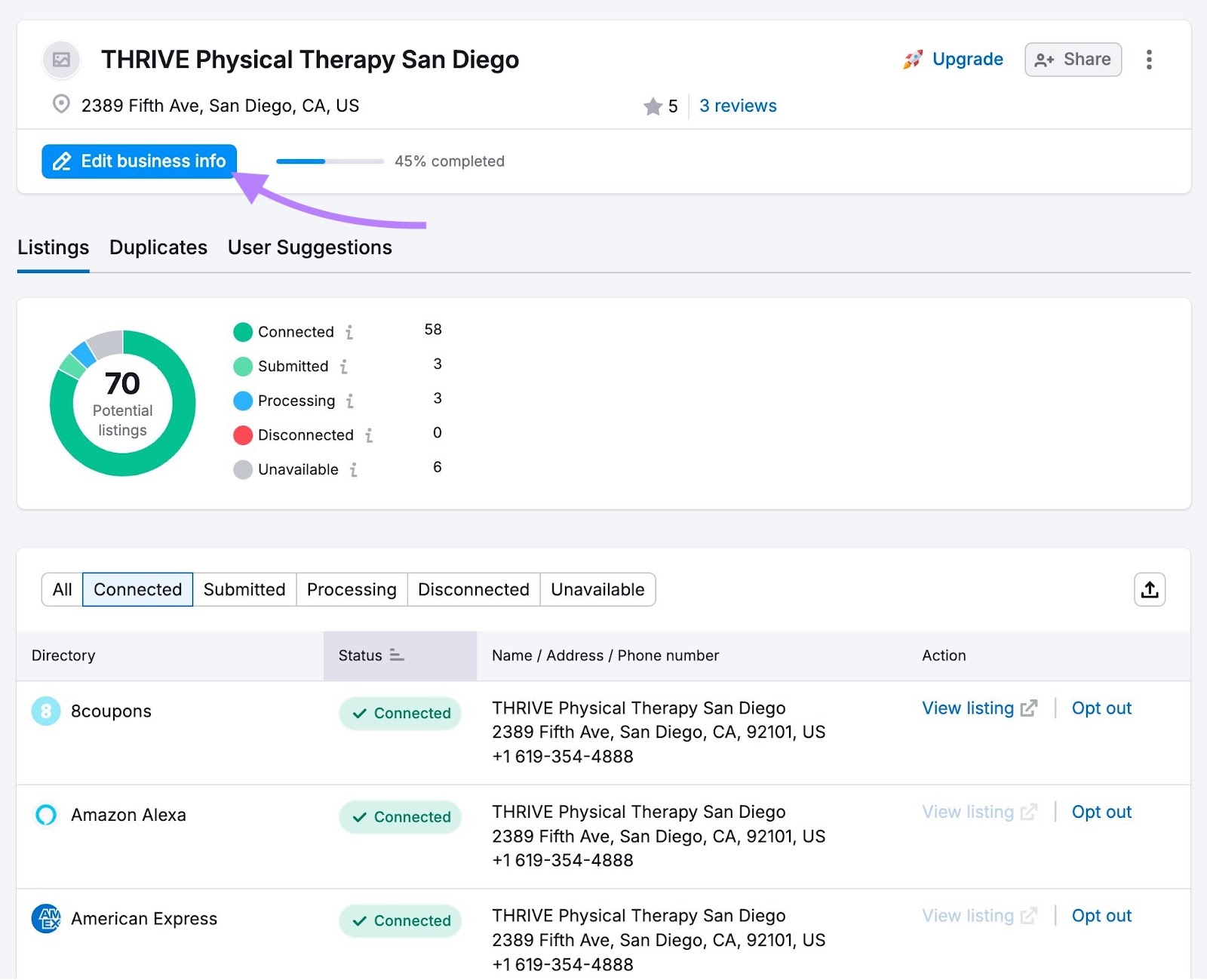
This way, you don’t have to manage each listing one by one.
4. Increase Your AI Visibility
People are also turning to AI voice assistants like ChatGPT’s voice mode to research local businesses.
ChatGPT alone now holds 4.33% of global traffic share. That may not sound huge, but it’s growing fast.
And while Google still processes more than 5 trillion searches a year, AI tools like ChatGPT are quietly becoming part of people’s everyday search habits, especially for local queries.
You can just ask, “Where can I find a good pediatrician nearby?” and it’ll answer you like a traditional voice assistant.
So how do you get mentioned in those results?
Similar to traditional voice search optimization, it involves making sure your business is showing up in the places these tools pull from.
For example, when I asked ChatGPT’s voice assistant for the best Indian restaurants in New York, it pulled results from a variety of sources. These included top search engine results, Wikipedia, YouTube, Reddit, and even local directories like Yelp:
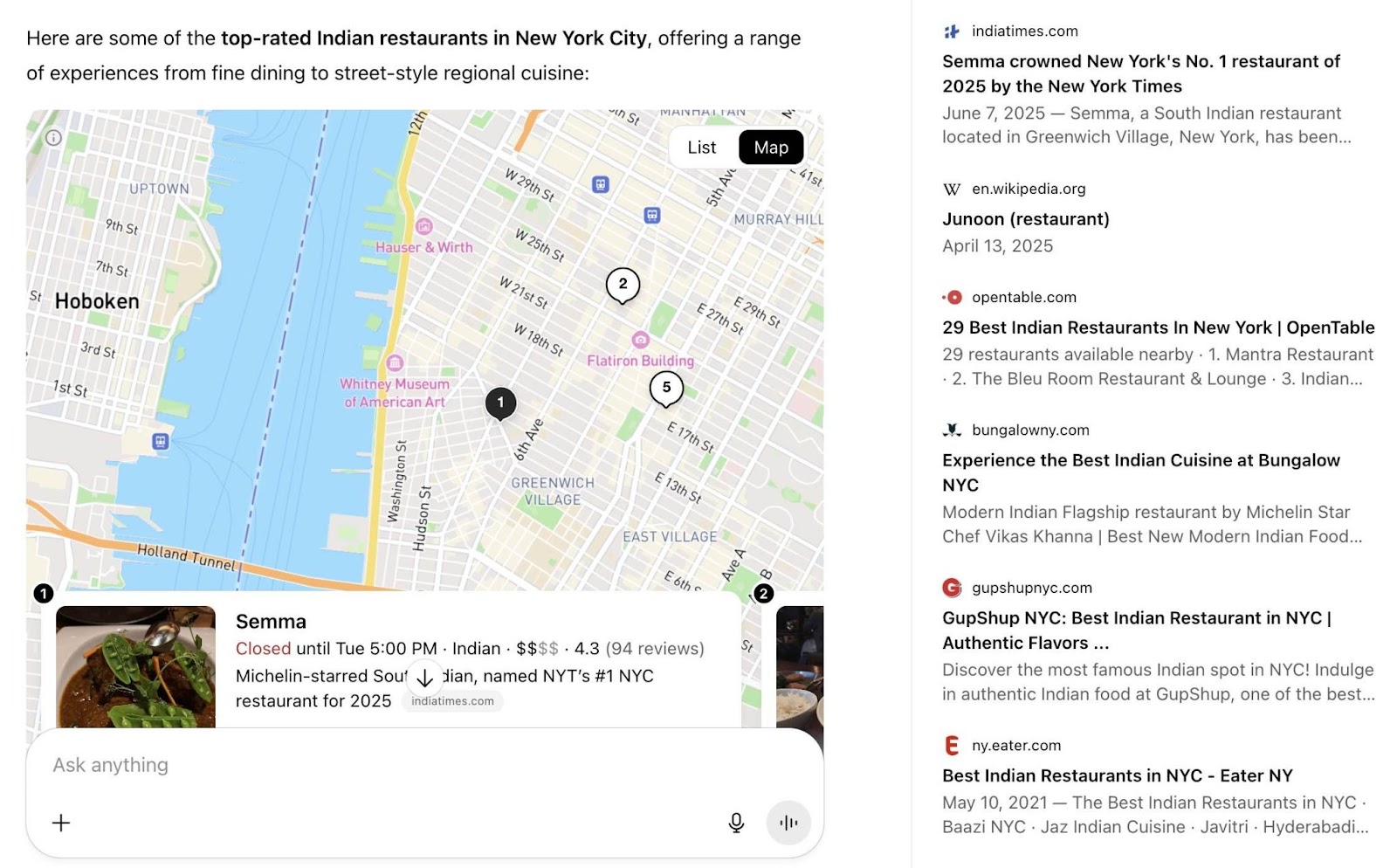
If I wanted to optimize my own restaurant for these kinds of searches, these are the places I’d want to try to show up and get mentions.
To increase your AI visibility:
- Double down on SEO. AI tools like ChatGPT rely in part on traditional search engine results. If your website ranks high on Google for local queries like “best dentist in Brooklyn,” there’s a good chance AI tools will surface your content, too.
- List your business across multiple directories. Make sure your business is listed on local directories like Google Business Profile, Apple Maps, Yelp, Bing Places, and Tripadvisor.
- Be visible in public forums. AI tools also pull from platforms like Reddit, Quora, and niche communities. If your business is being mentioned (or if you’re contributing to local discussions) it can increase your chances of showing up in AI-generated voice responses.
Use Semrush’s AI SEO Toolkit to analyze your brand’s AI presence across AI platforms like ChatGPT, Gemini, and Perplexity.
You can use it to understand your brand’s market share on each platform compared to your competitors.
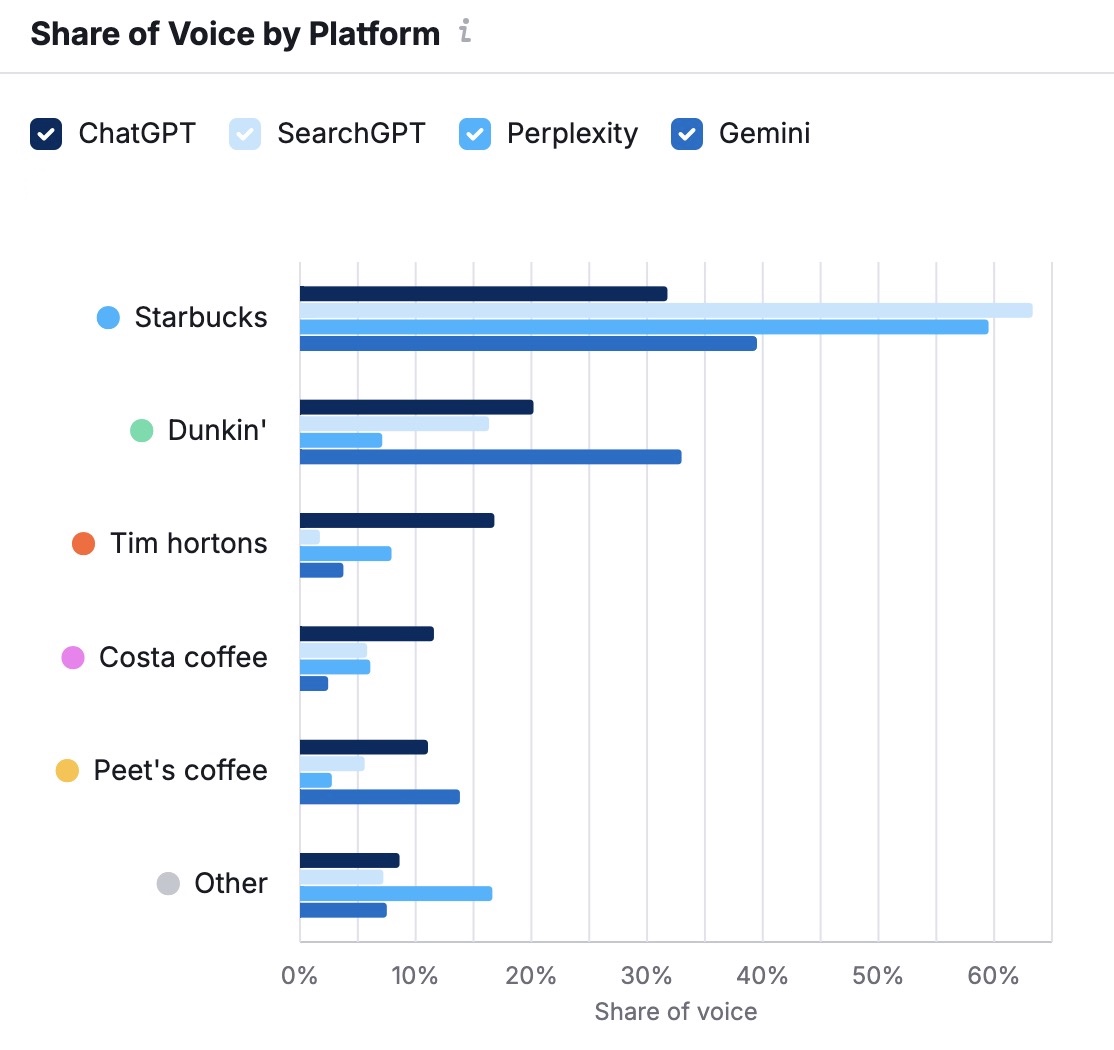
It also gives you topic ideas categorized by themes and intent. Making it easier to create content that’s more likely to get picked up by AI platforms.
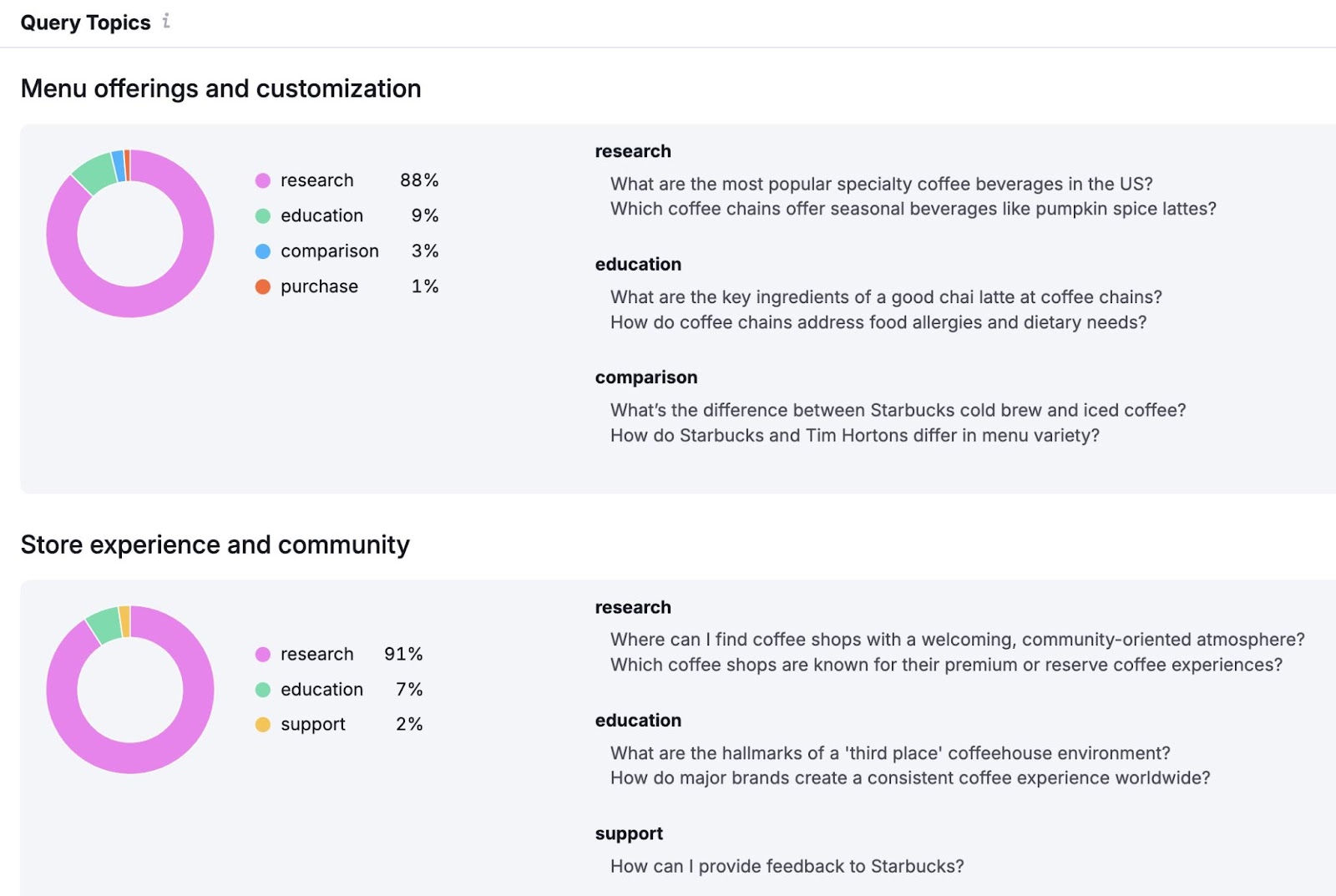
Answer these questions naturally in your website content to increase your chances of being picked up by AI voice assistants.
5. Target Location-Specific Question Keywords
Voice search queries are often more conversational and specific. So you can increase your chances of being picked up by voice assistants by targeting location-specific question keywords on your site.
Instead of “dentist Boston,” someone might ask, “Who is the best dentist in Boston?” or “Where can I get a teeth cleaning near Beacon Hill?”
Use Semrush’s Keyword Magic tool to identify these kinds of question keywords.
Simply enter a broad term that includes both your niche and location (like your target city, state, or neighborhood) and select your country. Then click “Search.”
(You can also enter your website URL to get AI-powered personalized data.)
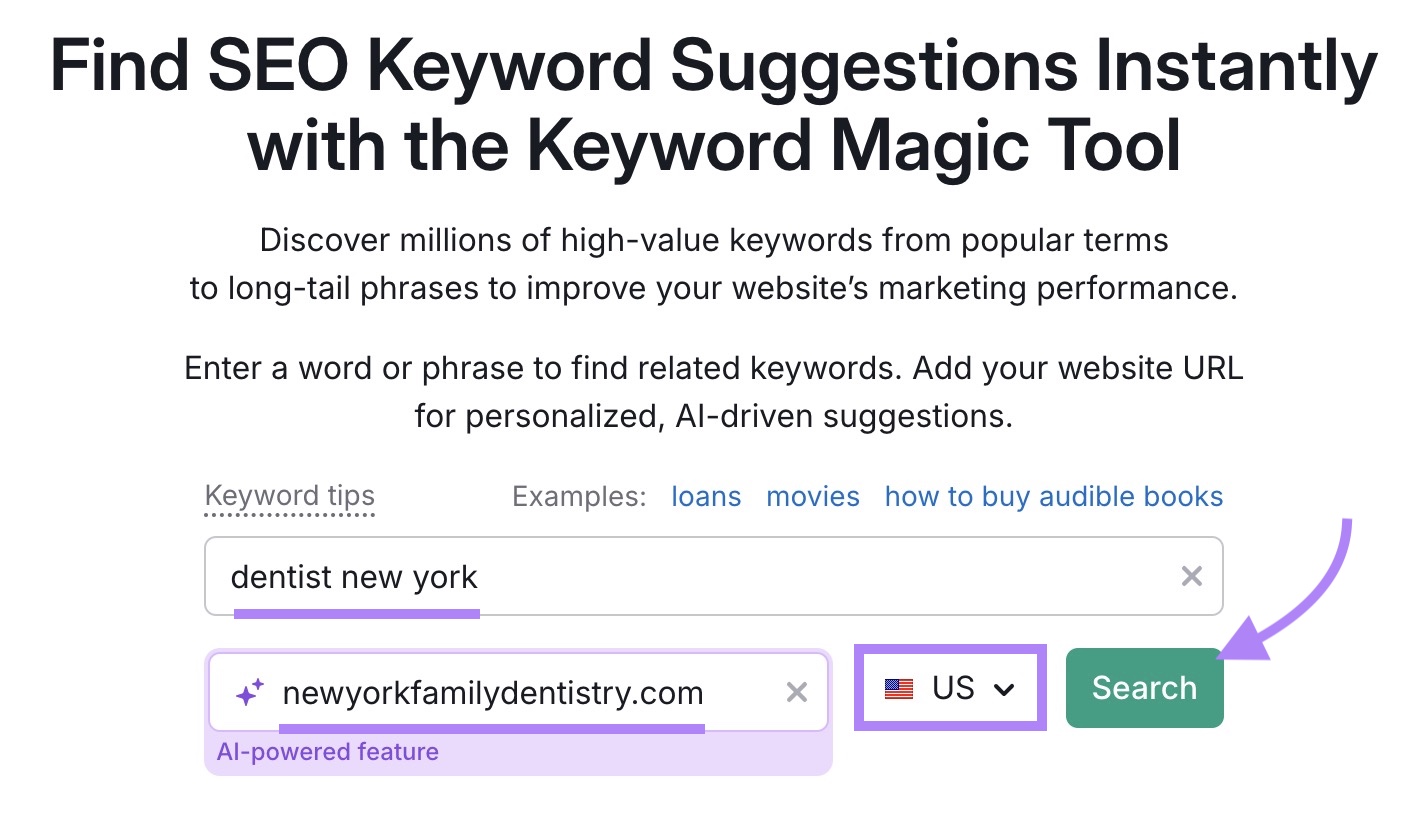
The tool will generate a list of related local keywords, along with helpful metrics like:
- Search volume: Average monthly searches over the past 12 months
- Keyword difficulty (KD%): How hard it is to rank in the top 10 results
- Search intent: What the searcher is trying to accomplish (labeled Transactional, Commercial, Informational, and/or Navigational)
- Personal Keyword Difficulty (PKD%): AI-powered estimate of how hard it would be for your site to rank for that keyword
- Potential traffic: An estimate of how much traffic you could earn if you ranked for that keyword
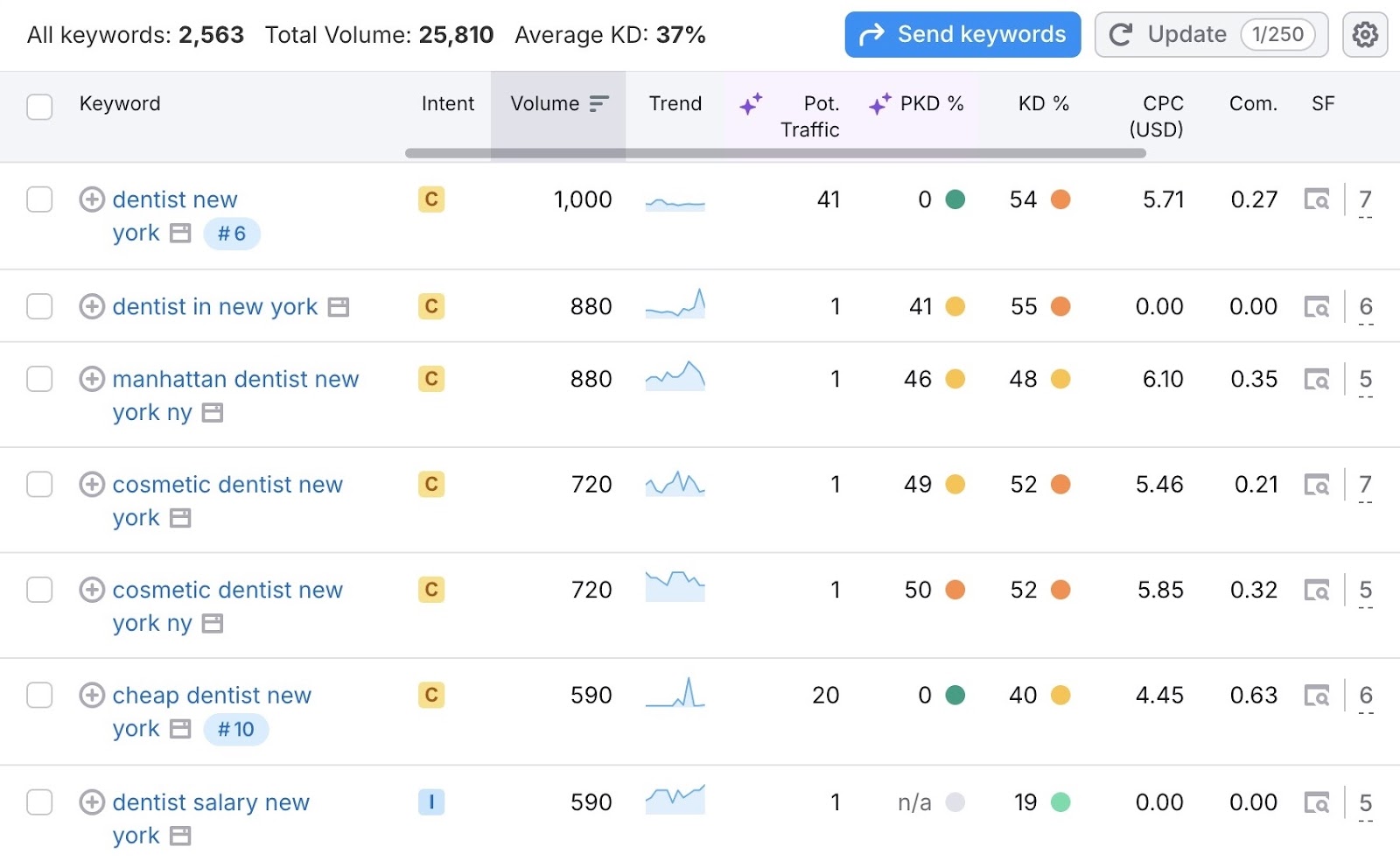
Use the “Questions” filter to find question-style keywords—the ones that mirror how people actually talk in voice searches.

Once you’ve found relevant keywords, create high-quality content around them.
These question-style keywords work especially well on local landing pages, FAQ sections, and blog posts that answer specific queries about your services.
The more naturally you weave them in, the better your chances of ranking higher for them and being picked up by voice assistants.
Optimize Your Business for Voice Search
You don’t need to “register” for voice search. But you do need to build a solid local online presence if you want to appear in voice search results.
Use Semrush’s Local Toolkit to manage your business listings, fix NAP inconsistencies, optimize your Google Business Profile, respond to customer reviews, and more.


